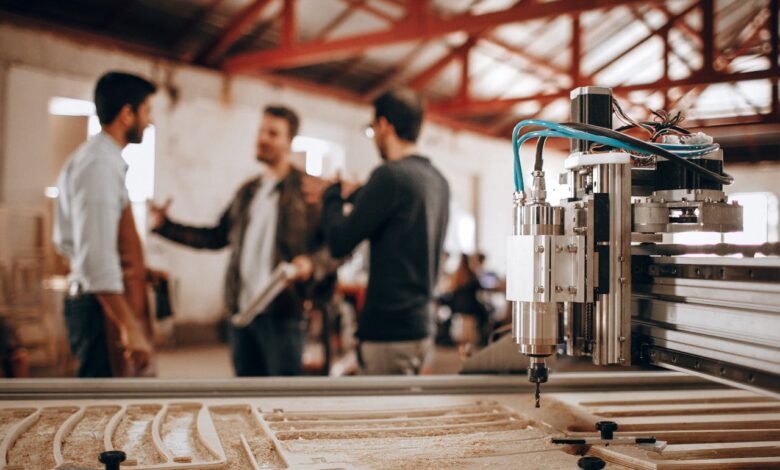
The construction industry has seen some exciting transformations lately, thanks to technology. Advancements like Building Information Modeling (BIM) and drones are reshaping how you design, plan, and execute projects, leading to improved efficiency and safety. With these tools, you can manage resources better and streamline communication among teams, making the whole process smoother.
As you dive into the world of tech in construction, you’ll discover how innovations like 3D printing and augmented reality are changing the game. These technologies not only enhance creativity but also reduce costs and minimize waste. Imagine being able to visualize a project before it’s even built; that’s the power technology brings to your work.
From enhanced project management software to smart machinery, technology is making it easier for you to tackle challenges in construction. By embracing these advancements, you can keep your projects on time, within budget, and up to the highest standards.
Evolution and Impact of Technology in Construction
The construction industry has experienced significant changes due to advancements in technology. A lot of real estate agents have already started marketing the new properties which use AI for construction. Learn more here. The transition from traditional methods to digital tools and innovative systems has transformed how you plan, design, and execute projects.
Transition to Digital Tools and Platforms
The shift to digital tools in construction has streamlined workflows. Be it physical tools like digital force gauge or software tools like AutoCAD, construction has transformed. You can now utilize cloud-based platforms that facilitate real-time collaboration.
Key advantages include:
- Accessibility: Access project data from anywhere.
- Efficiency: Reduce paperwork and manual processes.
- Communication: Enhance team coordination.
Using tools like 3D models and digital twins allows for better visualization of projects. This shift not only improves productivity but also minimizes errors, leading to cost savings.
Building Information Modeling: Revolutionizing Design and Collaboration
Building Information Modeling (BIM) stands out as a game-changer. It enables you to create accurate 3D models that represent both the physical and functional characteristics of structures.
BIM fosters collaboration among stakeholders by providing a shared platform. This means architects, engineers, and contractors can:
- Visualize designs in detail.
- Identify potential conflicts early.
- Enhance decision-making processes through predictive analytics.
BIM keeps the whole team aligned, making it easier to adapt to changes and ultimately improving project outcomes.
Adoption of AI and Machine Learning
Artificial intelligence and machine learning are making their mark in construction. You can leverage these technologies to automate tasks and analyze data.
AI algorithms can:
- Predict project risks by analyzing historical data.
- Optimize resource allocation to cut costs.
- Enhance safety through predictive maintenance.
By integrating AI into your workflows, you can make informed decisions faster. This technology not only improves efficiency but also enhances the accuracy of project estimates, ensuring smoother project execution.
Sustainability and Efficiency in Modern Construction
Modern construction is evolving with a focus on sustainability and efficiency. Implementing smart practices not only meets environmental goals but also enhances project performance and resource management. With custom build functional spaces with features like foot care for seniors, sun rooms, and personal spaces, sustainability is now a huge thing in construction.
Green Building Practices and Resource Management
Green building practices prioritize sustainable materials and energy-efficient designs. By selecting renewable resources, you can lower the environmental impact of your projects. Key materials include recycled steel, bamboo, and reclaimed wood.
Effective resource management is essential. Techniques like construction waste management and energy modeling help optimize resources. Utilizing eco-friendly certifications, such as LEED, encourages adherence to sustainability goals.
Benefits of Green Building:
- Reduces energy consumption
- Lower operating costs
- Improves indoor air quality
These practices contribute to both environmental health and economic savings, making them vital in modern construction.
Enhanced Efficiency through IoT and Real-Time Data
IoT devices and sensors are game changers in construction efficiency. By integrating real-time data, you can monitor equipment usage, material supply levels, and worksite conditions. This allows for proactive decision-making.
For example, IoT sensors can track energy consumption in real-time. This data helps in identifying inefficiencies instantly, reducing waste. Predictive analytics can even forecast potential delays or resource shortages, allowing you to adjust plans quickly.
Examples of IoT Applications:
- Smart thermostats in buildings
- Wearable tech for worker safety
- Automated site monitoring systems
Embracing IoT not only streamlines operations but also significantly boosts your construction site’s sustainability.
Reducing Carbon Footprint with Smart Design
Smart design focuses on minimizing the carbon footprint of construction projects. By incorporating passive solar techniques, natural ventilation, and thermal mass, your buildings can achieve remarkable energy efficiency.
Utilizing software for Building Information Modeling (BIM) helps you visualize energy flows and optimize designs before breaking ground. This proactive approach can lead to lower emissions during construction and operation.
Key Strategies for Smart Design:
- Maximize natural light
- Use high-performance insulation
- Implement rainwater harvesting systems
These strategies assist in achieving sustainability while ensuring that projects remain cost-effective and functional. Emphasizing smart design is crucial in your journey toward environmentally responsible construction practices.
Safety, Quality, and Risk Management with Emerging Tech
Emerging technologies are transforming safety protocols, quality control processes, and risk management in construction. You’ll see how tools like augmented reality, wearable devices, and advanced manufacturing techniques enhance job site safety and efficiency while minimizing delays and costs.
Improving On-Site Safety with AR and Wearables
Augmented reality (AR) enhances on-site safety by providing real-time visual guidance. Through AR glasses, you can view overlays of vital safety information, such as hazard locations and equipment operation instructions. This immediate access helps prevent accidents.
Wearable devices, like smart helmets and vests, monitor your environment and well-being. These devices can detect falls, fatigue, or exposure to hazardous conditions and send alerts. By integrating data from wearables, you improve site safety and foster a proactive safety culture.
Quality Control: From 3D Printing to Prefabrication
Quality control in construction benefits enormously from innovations like 3D printing and prefabrication. 3D printing allows for precise component creation, reducing material waste and errors. This technology enables quicker adjustments, enhancing overall build quality.
Prefabrication involves assembling components off-site under controlled conditions. This method ensures that the parts adhere to high-quality standards before reaching the construction site. Combined, these techniques streamline processes, helping you meet quality benchmarks consistently.
Mitigating Delays and Cost Overruns
Emerging tech also plays a crucial role in risk management. Digital project management tools help you track progress, resources, and budgets, allowing for real-time adjustments. This visibility helps mitigate unexpected delays.
Additionally, implementing cybersecurity measures safeguards your project data from breaches that can lead to financial losses. Protecting sensitive information ensures project continuity and minimizes the risk of costly setbacks. By leveraging technology, you can keep projects on time and within budget, reducing the chances of cost overruns significantly.
Conclusion
Tech is reshaping how you approach building and construction. From design to execution, advancements streamline processes, making them more efficient.
Key Benefits of Tech in Construction:
- Enhanced Efficiency: Tools like BIM (Building Information Modeling) help with accurate planning.
- Cost Savings: Automation reduces labor costs and minimizes errors.
- Safety Improvements: Wearable technology monitors health and safety in real-time.
Innovations like drones and 3D printing open new possibilities. You can survey sites quickly and print building components on-demand.
Collaboration improves with tech, allowing teams to communicate effectively across distances. Cloud-based platforms give you access to project data anytime, anywhere.





